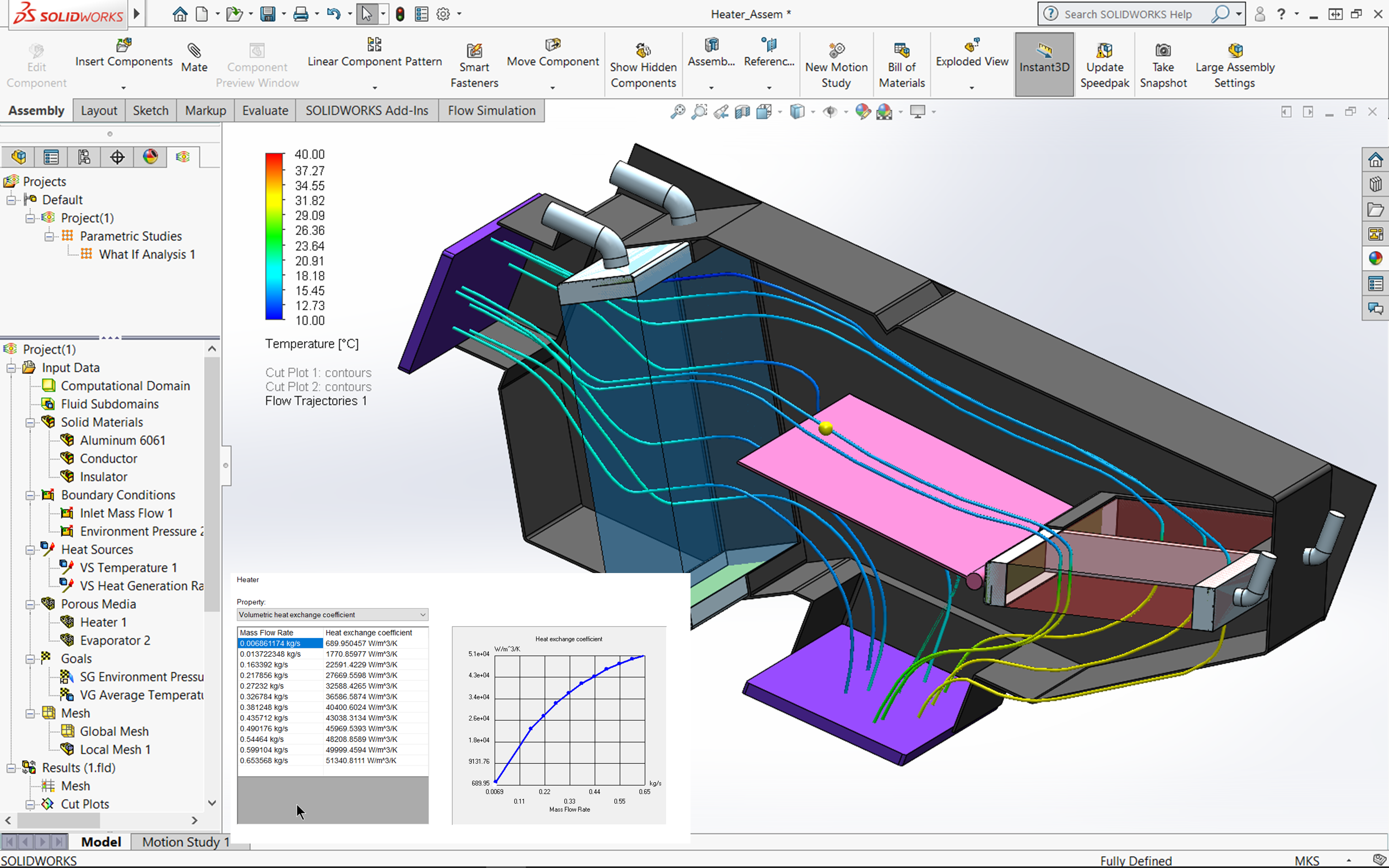
This example is a time-dependent thermal analysis study, to understand how quickly this will heat and/or cool.
 We can now run the study and analyze the results. Convection Coefficient is 100 W/(m^2.K), Bulk Ambient Temperature is 300 Kelvin (K). Accept that, and start a new Convection for the exposed faces of the microchip. Define Bulk Ambient Temperature (the temperature that surrounds the model) as 300 Kelvin (K). Define the Convection Coefficient as 250 W/(m^2.K). Select all the exposed faces of the heat sink. Right-click on Thermal Loads and select Convection. Because the connectors are insulated, we don’t need to define those. We now need to define the convection that is coming off of the rest of the faces on the heat sink. Define the contact based on the conductive glue 2.857e-6 K/W.
We can now run the study and analyze the results. Convection Coefficient is 100 W/(m^2.K), Bulk Ambient Temperature is 300 Kelvin (K). Accept that, and start a new Convection for the exposed faces of the microchip. Define Bulk Ambient Temperature (the temperature that surrounds the model) as 300 Kelvin (K). Define the Convection Coefficient as 250 W/(m^2.K). Select all the exposed faces of the heat sink. Right-click on Thermal Loads and select Convection. Because the connectors are insulated, we don’t need to define those. We now need to define the convection that is coming off of the rest of the faces on the heat sink. Define the contact based on the conductive glue 2.857e-6 K/W.  Click the two faces that touch between the microchip and heat sink. Create a Local Interaction, and make sure it is set to Thermal Resistance. The glue is not physically modeled, we are going to insert it as a contact resistance. Between our microchip and heat sink, we have a thermal conductive glue to help with the dissipation. Next, we need to consider how this heat is going to be dissipated. Use the FeatureManager flyout tree to select the microchip part. Right-click on Thermal Loads, and select Heat Power.
Click the two faces that touch between the microchip and heat sink. Create a Local Interaction, and make sure it is set to Thermal Resistance. The glue is not physically modeled, we are going to insert it as a contact resistance. Between our microchip and heat sink, we have a thermal conductive glue to help with the dissipation. Next, we need to consider how this heat is going to be dissipated. Use the FeatureManager flyout tree to select the microchip part. Right-click on Thermal Loads, and select Heat Power. 
Then we are going to define the heat power of the microchip.We will start by creating a new Thermal Study.Connectors – Insulated and used to connect to the rest of the electronic components.įor this example, we will be setting it up as a steady-state thermal analysis, which means there is no time factor involved.Our model will consist of a few different parts:







 0 kommentar(er)
0 kommentar(er)
